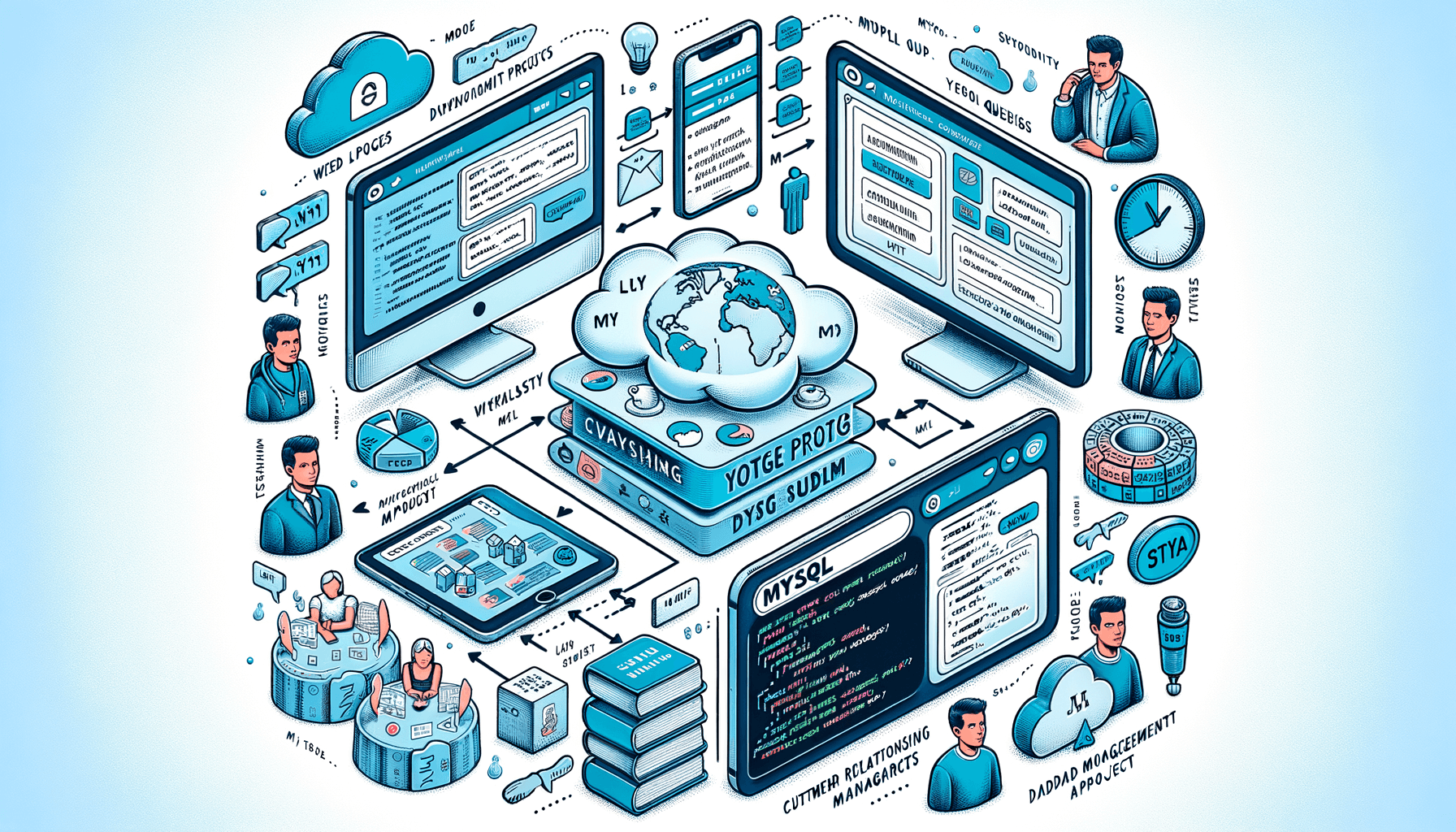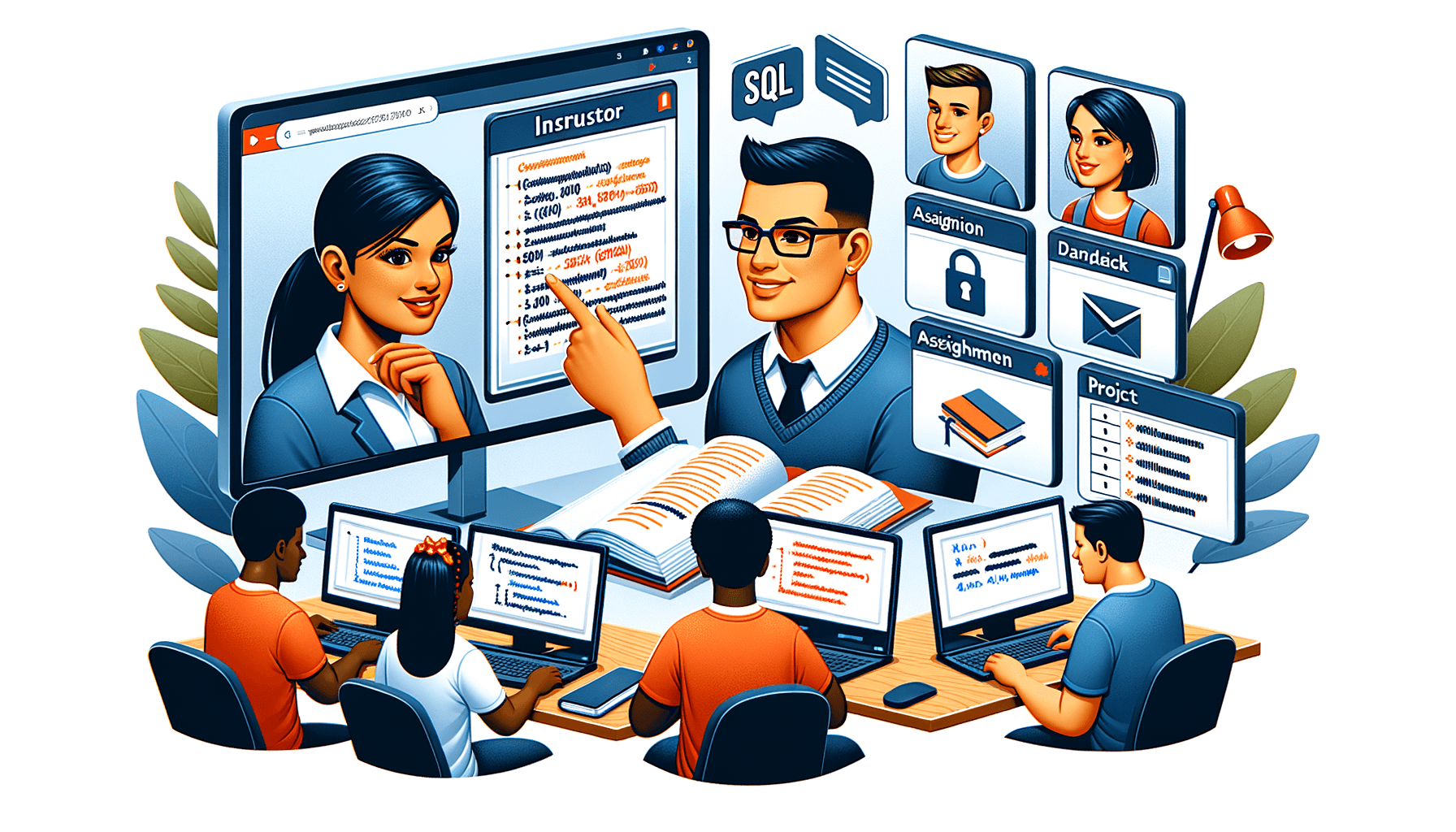A big variety of articles and resources

What projects should I do to strengthen my MYSQL skills?
 Sia Author and Instructor
Learn SQL
Sia Author and Instructor
Learn SQL
14 minute read
If you want to get better at MySQL, working on real projects is a great way to learn. By building different types of applications, you can understand how to use MySQL in various scenarios. This helps you see how databases work in the real world.
Key Takeaways
- Creating a personal blog can teach you how to design a database and manage user data.
- Building an e-commerce site helps you learn how to handle inventory, orders, and payments.
- A library management system shows you how to track books, borrowers, and loans.
- Designing a social media app teaches you how to store profiles, posts, and interactions.
- Making a task management tool helps you organize tasks, set deadlines, and collaborate with others.
Building a Personal Blog Platform
Creating a personal blog platform is a great way to improve our MySQL skills. We can start by designing the database schema, which involves planning how data will be stored and related. This step is crucial because a well-structured database makes it easier to manage and retrieve data efficiently.
Next, we need to implement CRUD operations. CRUD stands for Create, Read, Update, and Delete. These are the basic operations we will use to interact with our database. For example, we will need to create new blog posts, read existing ones, update them, and delete them if necessary.
Enhancing our blog platform with user authentication adds another layer of complexity. This means we will need to create a system where users can sign up, log in, and manage their accounts. User authentication is important for securing our platform and ensuring that only authorized users can make changes.
Building a personal blog platform not only helps us learn MySQL but also gives us a practical project to showcase our skills. It's a great way to demonstrate our ability to design, implement, and enhance a real-world application.
Creating an E-commerce Website
Managing Product Inventory
To start, we need to set up a database to keep track of all the products. This includes details like product names, descriptions, prices, and stock levels. Accurate inventory management is crucial to ensure that customers can only purchase items that are in stock. We can use SQL queries to add, update, and delete product information as needed.
Handling Customer Orders
Next, we focus on managing customer orders. This involves creating tables to store order details, such as customer information, order dates, and payment statuses. We should also implement SQL transactions to ensure that orders are processed correctly and that inventory levels are updated in real-time.
Integrating Payment Gateways
Finally, we need to integrate payment gateways to handle online transactions. This requires setting up secure connections to payment processors and ensuring that sensitive information, like credit card details, is handled safely. Using SQL, we can store transaction records and monitor payment statuses to keep everything running smoothly.
Building an e-commerce website is a comprehensive project that covers various aspects of database management, from inventory control to secure payment processing. It offers a great opportunity to apply and enhance your MySQL skills.
Developing a Library Management System
Cataloging Books and Resources
When we start building a library management system, the first step is to catalog books and resources. This involves creating a database that stores information about each book, such as title, author, genre, and publication date. A well-designed database schema is crucial for effective data management. We should also consider adding fields for different types of resources, like e-books, journals, and magazines.
Tracking Borrowers and Loans
Next, we need to track borrowers and their loans. This means setting up tables to store borrower information, including names, contact details, and membership status. We also need to create a system to record which books are borrowed, the due dates, and any overdue fines. This helps in maintaining data integrity and ensures that the library runs smoothly.
Generating Reports and Analytics
Finally, generating reports and analytics is essential for any library management system. We can create reports on various metrics, such as the most borrowed books, overdue items, and borrower activity. These reports can help library staff make informed decisions and improve services. Additionally, analytics can provide insights into trends and patterns, aiding in better resource management.
By mastering these aspects, we can build a robust library management system that meets the needs of both the library staff and its patrons.
Designing a Social Media Application
Storing User Profiles and Posts
When we design a social media app, the first step is to create a database that can store user profiles and posts. This involves setting up tables for user information, such as names, emails, and profile pictures. We also need tables for posts, which include text, images, and timestamps. Efficiently organizing this data ensures quick access and smooth performance.
Implementing Follow and Like Features
Next, we add features that let users follow each other and like posts. This requires additional tables to track who follows whom and which posts have been liked. These features help build a connected community and keep users engaged. Proper indexing of these tables is crucial for maintaining performance as the number of users grows.
Managing Comments and Interactions
Finally, we need to handle comments and other interactions. This means creating tables for comments linked to specific posts and users. We also need to manage notifications so users know when someone interacts with their content. This part of the project helps foster communication and keeps the platform lively.
Building a social media app is a great way to practice MySQL skills. It covers a wide range of database tasks, from basic table creation to complex indexing and performance tuning.
Constructing a Task Management Tool
Organizing Tasks and Projects
When we start building a task management tool, the first step is to organize tasks and projects. We need to create a database schema that can handle different projects and their related tasks. Each task should have details like title, description, and due date. This helps in keeping everything structured and easy to manage.
Setting Deadlines and Reminders
Next, we should focus on setting deadlines and reminders. By adding fields for deadlines and reminders in our database, we can ensure that users never miss an important task. We can also implement notifications to alert users about upcoming deadlines. This feature is crucial for maintaining productivity.
Collaborating with Team Members
Finally, our tool should support collaboration among team members. We can add features that allow users to assign tasks to different team members and track their progress. This makes it easier for teams to work together and complete projects efficiently.
Building a task management tool is a great way to strengthen your MySQL skills. It involves creating a robust database schema, implementing essential features, and ensuring smooth collaboration among users.
Building a Real Estate Listing Service
Listing Properties and Details
Creating a real estate listing service is a great way to gain practical SQL skills. We start by designing a database to store property details. This includes information like location, price, and size. We also need to handle images and descriptions. This project will help us understand how to structure data efficiently.
Searching and Filtering Listings
Next, we implement search and filter functions. Users should be able to find properties based on their preferences. This involves writing complex SQL queries. It's a hands-on way to learn about indexing and query optimization. The effort required for success in this part is significant but rewarding.
Handling Inquiries and Bookings
Finally, we add features for handling inquiries and bookings. Users should be able to contact property owners and schedule visits. This requires us to manage user interactions and store booking details. By the end of this project, we'll have a complete system that covers all aspects of real estate listings.
From zero to PostgreSQL junior DBA: complete database administration course. Gain practical SQL skills with real-world problems, hands-on projects, and expert-led training. Instructor with 25+ years experience.
Creating a Fitness Tracking Application
Recording Workouts and Activities
To build a fitness tracking app, we need to start by recording workouts and activities. This involves creating tables to store data like exercise type, duration, and calories burned. Accurate data entry is crucial for meaningful insights.
Monitoring Progress and Goals
Next, we should focus on monitoring progress and goals. Users should be able to set fitness goals and track their progress over time. This can be done by comparing current data with past records, helping users stay motivated.
Integrating with Wearable Devices
Finally, integrating with wearable devices can enhance the app's functionality. By syncing data from devices like smartwatches, we can provide real-time updates and more accurate tracking. This integration can make the app more user-friendly and engaging.
Building a fitness tracking app is a great way to apply SQL skills in a real-world project. It involves various aspects of database management, from data entry to real-time updates, making it a comprehensive learning experience.
Developing a Customer Relationship Management (CRM) System
Managing Customer Information
In this project, we will focus on creating a system to manage customer information efficiently. A well-structured database is crucial for storing customer details such as names, contact information, and purchase history. This will help us keep track of our interactions and provide better service.
Tracking Sales and Interactions
Tracking sales and customer interactions is essential for understanding our business performance. We will design tables to log sales data and customer communications. This will allow us to analyze trends and make informed decisions.
Automating Marketing Campaigns
Automating marketing campaigns can save time and increase efficiency. By setting up automated emails and promotions based on customer behavior, we can ensure timely and relevant communication. This project will involve creating triggers and stored procedures to handle these tasks.
By developing a CRM system, we can improve our customer relationships and streamline our business processes. This project will provide valuable experience in database management and automation techniques.
Designing an Online Learning Platform
Organizing Courses and Materials
When designing an online learning platform, the first step is to organize courses and materials effectively. This involves creating a structured layout where students can easily find and access the content they need. A well-organized course survey page offers tailored learning experience, enhanced career opportunities, and exclusive benefits like 1-on-1 coaching and AI practice. Meet instructor Eric for SQL expertise.
Tracking Student Progress
Tracking student progress is crucial for both students and instructors. By implementing a system that monitors assignments, quizzes, and overall performance, we can provide valuable feedback and support. This helps students stay on track and achieve their learning goals.
Facilitating Discussions and Feedback
An essential part of any learning platform is the ability to facilitate discussions and feedback. This can be achieved through forums, chat rooms, or direct messaging. Encouraging interaction among students and between students and instructors fosters a collaborative learning environment. It also allows for immediate feedback, which is vital for continuous improvement.
Constructing a Job Portal
Creating a job portal is a great way to boost our MySQL skills. This project involves several key tasks that will help us understand database management better.
Building a Travel Booking System
Managing Travel Packages
In this project, we will focus on creating a system to manage various travel packages. This includes adding, updating, and deleting travel packages from the database. A well-structured database schema is essential for storing details like destination, price, and duration. We can use tables to organize this information efficiently.
Handling Reservations and Payments
Handling reservations involves creating a user-friendly interface where customers can book their travel packages. We will also implement a payment gateway to process transactions securely. Ensuring data integrity during these operations is crucial. We might use a combination of tables and forms to capture and store reservation details.
Providing Customer Support
Providing excellent customer support is key to the success of any travel booking system. We will set up a system to manage customer inquiries and feedback. This could include a ticketing system to track issues and resolutions. Additionally, we can create a FAQ section to address common questions, helping users find answers quickly.
By working on this project, we will gain hands-on experience in managing complex databases, handling secure transactions, and providing top-notch customer service. This will significantly enhance our MySQL skills and prepare us for real-world applications.
Creating a Restaurant Reservation System
Managing Table Bookings
When we build a restaurant reservation system, the first step is to manage table bookings. We need to design a database that can handle reservations efficiently. This includes storing details like the date, time, and number of guests. A well-structured database ensures that we can quickly retrieve and update reservation information.
Handling Customer Preferences
Next, we should focus on handling customer preferences. This involves recording special requests, such as dietary restrictions or preferred seating. By keeping track of these details, we can provide a better dining experience. Personalized service can make a big difference in customer satisfaction.
Generating Reservation Reports
Finally, generating reservation reports is crucial for restaurant management. These reports help us understand booking patterns and peak times. We can use this data to optimize staffing and improve service. For example, a report might show that weekends are busier, so we can schedule more staff accordingly.
Understanding how to manage reservations and customer preferences is key to running a successful restaurant. By focusing on these areas, we can ensure a smooth and enjoyable dining experience for our guests.
Building a restaurant reservation system can be a game-changer for your business. It helps manage bookings efficiently and improves customer satisfaction. Want to learn more about creating such a system? Visit our website for detailed guides and expert tips.
Conclusion
In summary, working on various MySQL projects can greatly improve your skills. By tackling different types of projects, you will learn how to handle real-world problems and find solutions. Whether you are building a simple database for a small business or creating a complex system for a large organization, each project will teach you something new. Remember, practice is key. The more you work with MySQL, the more confident and skilled you will become. So, start a project today and watch your abilities grow.
Frequently Asked Questions
What kind of projects can help me improve my MySQL skills?
You can work on projects like a personal blog platform, an e-commerce website, or a library management system. These projects will help you practice different MySQL features.
How can I start building a personal blog platform?
Begin by designing the database schema. Then, implement CRUD operations and add user authentication to make it more secure.
What should I focus on when creating an e-commerce website?
You should focus on managing product inventory, handling customer orders, and integrating payment gateways. These are key parts of any e-commerce site.
What are the main tasks in developing a library management system?
Cataloging books and resources, tracking borrowers and loans, and generating reports and analytics are the main tasks you should focus on.
How can I enhance a social media application?
Store user profiles and posts, implement follow and like features, and manage comments and interactions to enhance your social media app.
What is important when building a task management tool?
Organize tasks and projects, set deadlines and reminders, and allow collaboration with team members to make a useful task management tool.
How do I create a fitness tracking application?
Record workouts and activities, monitor progress and goals, and integrate with wearable devices to create an effective fitness tracking app.
What features should a customer relationship management (CRM) system have?
A CRM system should manage customer information, track sales and interactions, and automate marketing campaigns to be effective.
Related Articles

Can I start career as SQL devloper at age of 35 as single?
13 minute read

Discover the Best Online SQL Course for Your Data Needs
9 minute read

Get Certified with Our SQL Online Course
8 minute read




